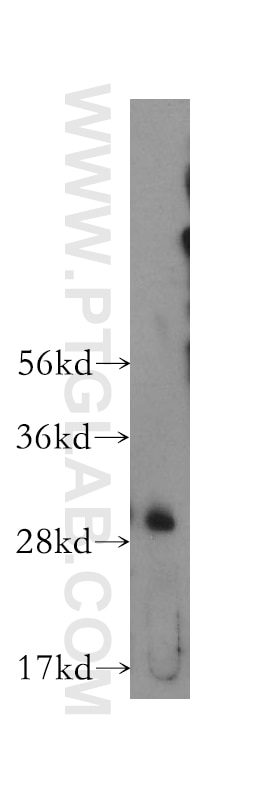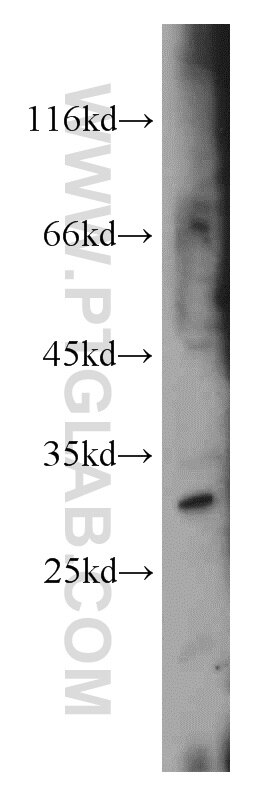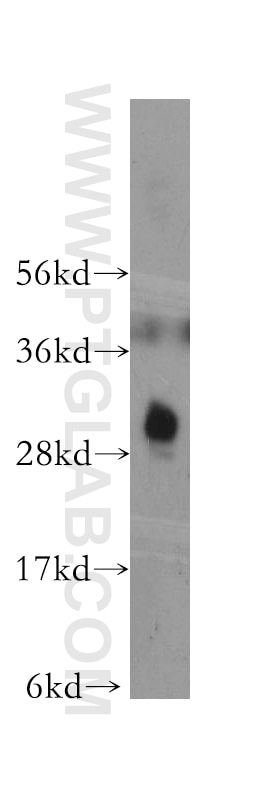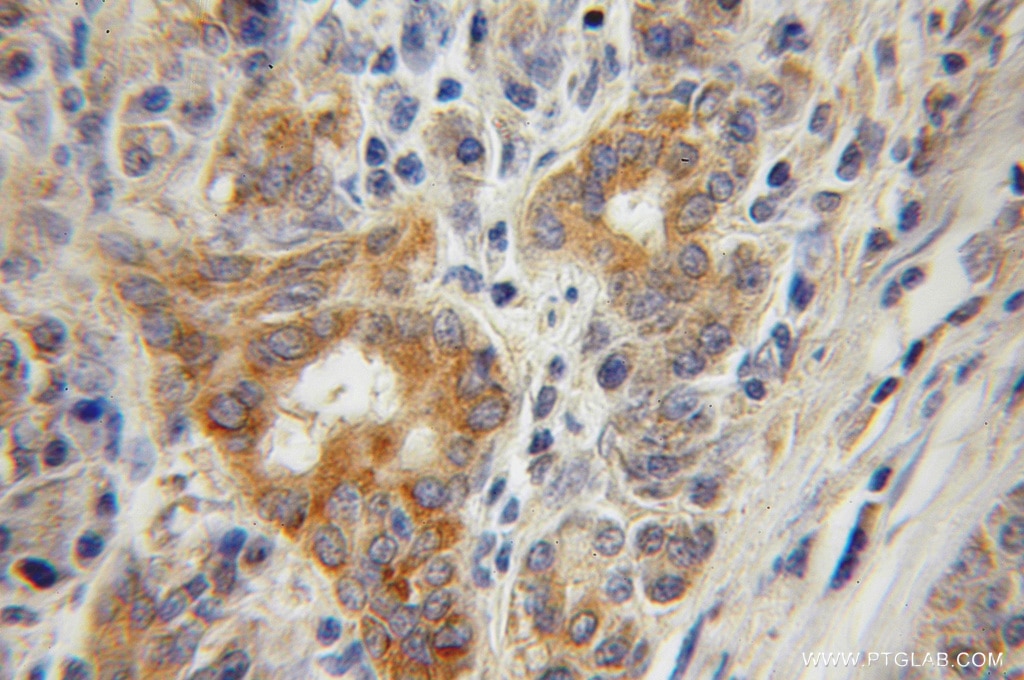Anticorps Polyclonal de lapin anti-CTDSP2
CTDSP2 Polyclonal Antibody for WB, IHC, ELISA
Hôte / Isotype
Lapin / IgG
Réactivité testée
Humain, rat, souris
Applications
WB, IHC, ELISA
Conjugaison
Non conjugué
N° de cat : 11116-1-AP
Synonymes
Galerie de données de validation
Applications testées
| Résultats positifs en WB | tissu rénal humain, cellules HepG2, cellules K-562 |
| Résultats positifs en IHC | tissu de cancer du pancréas humain il est suggéré de démasquer l'antigène avec un tampon de TE buffer pH 9.0; (*) À défaut, 'le démasquage de l'antigène peut être 'effectué avec un tampon citrate pH 6,0. |
Dilution recommandée
| Application | Dilution |
|---|---|
| Western Blot (WB) | WB : 1:200-1:1000 |
| Immunohistochimie (IHC) | IHC : 1:20-1:200 |
| It is recommended that this reagent should be titrated in each testing system to obtain optimal results. | |
| Sample-dependent, check data in validation data gallery | |
Informations sur le produit
11116-1-AP cible CTDSP2 dans les applications de WB, IHC, ELISA et montre une réactivité avec des échantillons Humain, rat, souris
| Réactivité | Humain, rat, souris |
| Hôte / Isotype | Lapin / IgG |
| Clonalité | Polyclonal |
| Type | Anticorps |
| Immunogène | CTDSP2 Protéine recombinante Ag1601 |
| Nom complet | CTD (carboxy-terminal domain, RNA polymerase II, polypeptide A) small phosphatase 2 |
| Masse moléculaire calculée | 31 kDa |
| Poids moléculaire observé | 31 kDa |
| Numéro d’acquisition GenBank | BC065920 |
| Symbole du gène | CTDSP2 |
| Identification du gène (NCBI) | 10106 |
| Conjugaison | Non conjugué |
| Forme | Liquide |
| Méthode de purification | Purification par affinité contre l'antigène |
| Tampon de stockage | PBS with 0.02% sodium azide and 50% glycerol |
| Conditions de stockage | Stocker à -20°C. Stable pendant un an après l'expédition. L'aliquotage n'est pas nécessaire pour le stockage à -20oC Les 20ul contiennent 0,1% de BSA. |
Informations générales
CTDSPs are C-class phosphatases that act on Ser 5 of the Pol II C-terminal domain (CTD) to decrease transcription [PMID:15681389]. CTDSP enzymatic activity is required for REST function, and knockdown of CTDSP induces the neuronal differentiation of mouse embryonic carcinoma P19 cells. CTDSP2 has been shown to enhance TGF-β signaling by the dephosphorylation of SMAD proteins and attenuates androgen receptor-mediated transcription [PMID:16724108]. It negatively regulates RNA polymerase II transcription by controlling the transition from initiation/capping to processive transcript elongation. It was recruited by REST to neuronal genes that contain RE-1 elements, leading to neuronal gene silencing in non-neuronal cells[PMID: 12721286].
Protocole
| Product Specific Protocols | |
|---|---|
| WB protocol for CTDSP2 antibody 11116-1-AP | Download protocol |
| IHC protocol for CTDSP2 antibody 11116-1-AP | Download protocol |
| Standard Protocols | |
|---|---|
| Click here to view our Standard Protocols |





